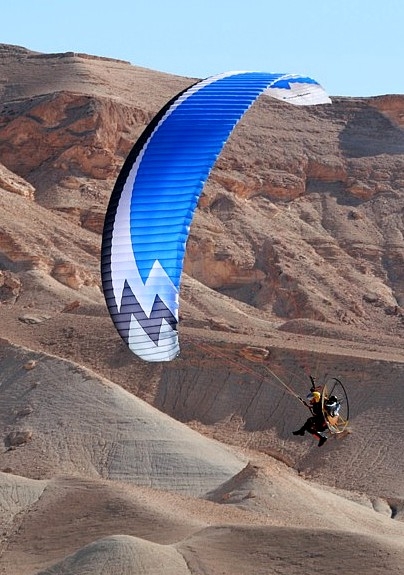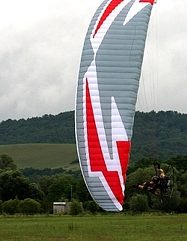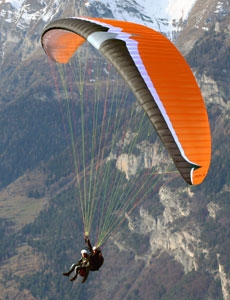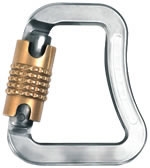Description
The Nucleon is an Action/ReAction class paraglider, yet designed around a different idea (proven in Synthesis and Plasma). The new concept assumes linear characteristics of acceleration (equally shared between trims and speed system) and limited reflexivity at slow trim settings. It is accompanied by a number of new features, intensively tested since 2007 and introduced to mass production for the first time.
As a result we have a 100% reflex PPG paraglider with great performance and outstanding safety (comparable to the already legendary ReAction), presenting handling similar to classic paragliders (at low speeds).
Nucleon is certified EN/LTF, DULV and EAPR (see Technical Data and Download sections).
The Nucleon takes off perfectly, rising fast and clean after an easy inflation. In favourable conditions inflation is possible with body movement only, without the need to hold the risers in your hands.
For 2012 season there is a lifting of the Nucleon available. The WRC version (With Rod Concept) incorporates Dudek Flexi Egde technology.
Some minor modifications in the design (improving curvature among others) caused the wing to be more agile. Exchanging mylar reinforcements for elastic rods (as in other our recent designs: Hadron, Optic, Colt, Orca2) results in easier inflation and stiffens the leading edge. Increased speed ranges are another advantage of that improvement. ALC+ (new version of the ALC steering system) is more efficient and affects the canopy in more proportionate way. In effect steering appears to be smoother.
Unfortunately despite relatively minor changes, Nucleon WRC is not covered by the certificate issued for standard version. Anybody wishing to use certified paraglider will have to stay with regular Nucleons, which due to constant demand will remain in production for the foreseeable future.
*******
After prolonged field testing of the Nucleons WRC it looks like relatively modest changes in design brought surprisingly good results. A paraglider that was to please mainly competitors turned out to be pretty similar to classic Nucleon in terms of stability and safety, with markedly improved agility and launch behaviour.
That’s why all pilots interested in a Nucleon class paraglider who don’t care much for a certification should seriously consider a WRC version. This is definitely not only a competition craft, yet improved enough to make us temporarily resign of creating a Nucleon 2. And since it is very similar to original Nucleon, we deem adding a ‘WRC’ suffix instead of ‘2’ to be proper.
The Nucleon incorporates a number of proven and some novel features improving flight comfort and performance.
A set of design tools called Canopy Shape Guard effectively stiffens the wing along its entire span, practically eliminating any lateral canopy movement.
CSG oversees three crucial factors:
- It forms the canopy so that it becomes a shape as close to the original design as possible, with equally distributed tension. No more irregular shape and bulging cells! (sadly, still quite often noticed on paragliders from some "leading companies").
- It stabilizes the canopy in flight. Any wing that behaves like an accordion is detested by pilots and suffers fatal losses in performance.
- It makes the canopy durable. It is widely known that PPG pilots are keen on overloading their wings, seeking more speed and stability. Initially it works, but soon deformations of excessively loaded fabric do occur. The most dangerous ones can be seen as lateral folds on the wing’s upper surface, located between suspension line rows. With the Nucleon that danger is practically eliminated.
- VS (V-shaped Supports) – densely placed diagonal supports bolster each rib on both sides (most wings have only one-sided supports). Their size and shape make sure that no lateral folds will occur – a vital point in preserving laminar airflow.
- RSS (Reinforcing Strap System) – an independent reinforcement net on lower surface, strengthening and stiffening the whole canopy.
- OCD (Optimized Crossports Design) – The intercellar openings have carefully designed shapes and are optimally placed between stress lines in the ribs.
- CCS (Closed Cell Structure) – This is a number of closed cells in the most important places. Its goal is to hinder the backflow from the cells out, thus facilitating their refill and canopy recovery in case of a collapse.
The only CSG flaws are the increase in weight (about 1 kg), material- and labour consumption, and of course overall cost. Yet it is well worth the sweat, as in turn we get a no-compromise product of highest performance and quality, able to keep its original parameters for a long, long time.
The Nucleon is our first paraglider equipped as standard with ALC, an alternative control system. The new system replaces previous TST, and is based on a solution developed by Michel Carnet on his ReAction since 2007, at the World Championship in China.
ALC allows for aggressive, yet effortless, turns on full speed without influencing its reflex aerofoil. It is especially important in the case of bigger canopies, inherently haunted by significant steering forces and low agility.
The new steering component is a red ball, easily positioned to fit various harness hang-points and personal preferences. In addition, the ALC ball and line are routed in such a way to be easy to use without the risk of entanglement with risers or other parts. Of course you can use just the standard brakes if you wish, ignoring the ALC ball.
The current version of ALC is honed to perfection by long trials of numerous designs. All signs show that it will soon become a standard in alternative PPG control systems.
Classic steering with brakes has been redesigned too, rendering it even more effective than in our earlier paragliders. The Nucleon’s brakes work even at fastest trim and speed settings, while at slow speeds their action is simply perfect.
The task of this feature is to counteract the effect of engine torque, that tends to make the paraglider turn in the direction opposite to the propeller’s rotation. TEA balances the torque by adjusting the length of some wingtip lines, and it can be adjusted to match you specific combination of paramotor/propeller. Simple to use, effective and easy to toggle on & off in the air.





Reviews
There are no reviews yet.